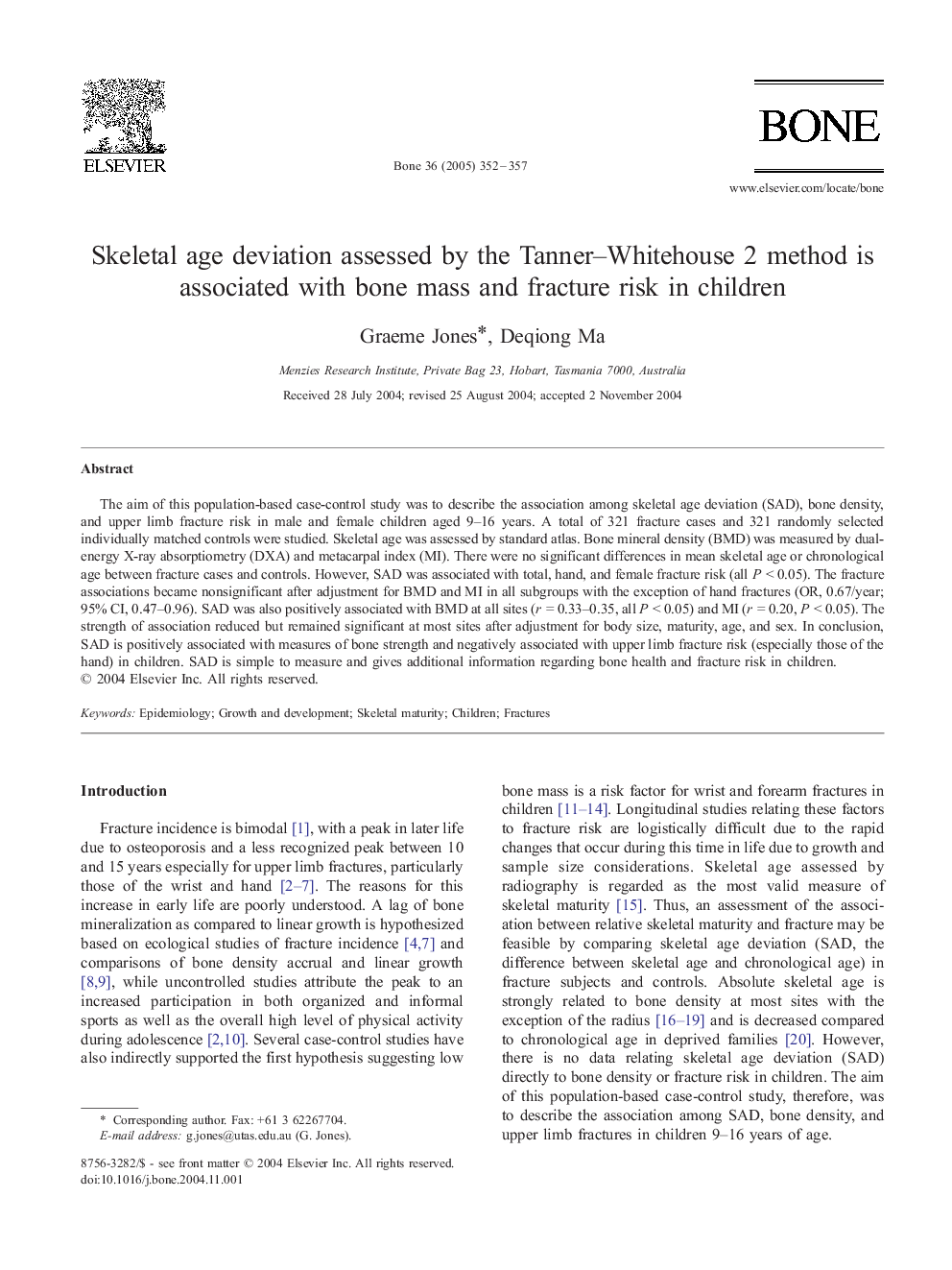| کد مقاله | کد نشریه | سال انتشار | مقاله انگلیسی | نسخه تمام متن |
|---|---|---|---|---|
| 9105152 | 1153406 | 2005 | 6 صفحه PDF | دانلود رایگان |
عنوان انگلیسی مقاله ISI
Skeletal age deviation assessed by the Tanner-Whitehouse 2 method is associated with bone mass and fracture risk in children
دانلود مقاله + سفارش ترجمه
دانلود مقاله ISI انگلیسی
رایگان برای ایرانیان
کلمات کلیدی
موضوعات مرتبط
علوم زیستی و بیوفناوری
بیوشیمی، ژنتیک و زیست شناسی مولکولی
زیست شناسی تکاملی
پیش نمایش صفحه اول مقاله

چکیده انگلیسی
The aim of this population-based case-control study was to describe the association among skeletal age deviation (SAD), bone density, and upper limb fracture risk in male and female children aged 9-16 years. A total of 321 fracture cases and 321 randomly selected individually matched controls were studied. Skeletal age was assessed by standard atlas. Bone mineral density (BMD) was measured by dual-energy X-ray absorptiometry (DXA) and metacarpal index (MI). There were no significant differences in mean skeletal age or chronological age between fracture cases and controls. However, SAD was associated with total, hand, and female fracture risk (all P < 0.05). The fracture associations became nonsignificant after adjustment for BMD and MI in all subgroups with the exception of hand fractures (OR, 0.67/year; 95% CI, 0.47-0.96). SAD was also positively associated with BMD at all sites (r = 0.33-0.35, all P < 0.05) and MI (r = 0.20, P < 0.05). The strength of association reduced but remained significant at most sites after adjustment for body size, maturity, age, and sex. In conclusion, SAD is positively associated with measures of bone strength and negatively associated with upper limb fracture risk (especially those of the hand) in children. SAD is simple to measure and gives additional information regarding bone health and fracture risk in children.
ناشر
Database: Elsevier - ScienceDirect (ساینس دایرکت)
Journal: Bone - Volume 36, Issue 2, February 2005, Pages 352-357
Journal: Bone - Volume 36, Issue 2, February 2005, Pages 352-357
نویسندگان
Graeme Jones, Deqiong Ma,